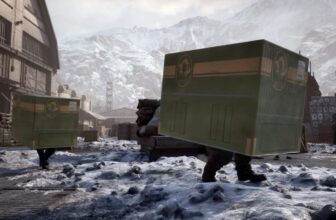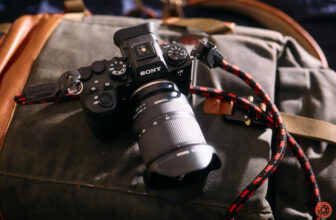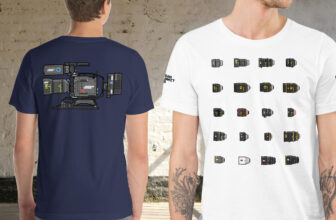Nikon Z5 II is an entry-level camera, and Sony A7 IV is a semi-professional full-frame camera. The Sony A7 IV camera was announced on October 21, 2021. And if you compare with the Nikon Z5 II, it has been almost 3.5 years of gap between the two cameras, so despite of being an entry-level camera, the Nikon Z5 II has arrived with really advanced core specifications and it looks very competitive.
Price Difference Between the Sony A7 IV and the Nikon Z5 II
The other good thing that we generally see at first is the price difference, even before the specification, current status of both the cameras by applying all the possible discounts:
Sony A7 IV Price – $2498
Nikon Z5 II Price – $1696
So, we do have a good price difference between the two cameras.
And the amount of money we are saving in the Nikon Z5 II body, we can get lenses like Nikkor 50 mm 1.8, Nikkor 28 mm f/2.8 or Viltrox 85mm f/1.8 Z.
Now let’s talk about the design difference, the difference we have in the photographic features of both cameras and finally the video core specs difference.
Best camera design-wise:
Nikon has been creating their DSLR for decades, and their mirrorless Z5 II is very easy to hold. At the very same time, we now have a 3000-nits brightness-based electronic viewfinder which helps us to shoot even in harsh light conditions.
Sony is in its 4th generation of A7 series camera, and overall design of the camera is really very good, and the good thing is that the old menu system of the Sony has been upgraded in the A7 IV so now you don’t have to fight with the old menus in the Sony camera. So overall, the A7 IV camera design is also very appealing and usable, although about EVF screen brightness information remains uncertain. Sony hasn’t disclosed how many nits of brightness does the A7 IV EVF has.
Why do We Need a CF Express card SLot in the Sony A7 IV?
For storage purposes, the Sony A7 IV camera also features an additional CFexpress card slot inside it, but we don’t know the exact requirement of the CF card type A existence inside the Sony body since the continuous shooting speed of the A7 IV camera is limited to 10 frames per second. Even in that, the specific scenario doesn’t require that CFexpress card. And when we talk about 4K 30 APS-C crop 60fps recording, in both of these scenarios the recording resolution and bitrates match with the Nikon Z5 II, which does the everything same or even better by recording complete N-RAW video internally and providing continuous shooting speed in high resolution up to 30 frames per second in the SD card slot.
Yes, we do have a slight resolution difference between the 24 MP and 33 MP sensor, and we are going to compare both sensors here in this article and let’s find out the best sensor for you. Image credit to all tests goes to dpreview.com
Which Camera Captures the Best Images?
Yes, we do have a slight resolution difference between the 24 MP and 33 MP sensor, and we are going to compare both sensors here in this article and let’s find out the best sensor for you.
Now we have picked up the Nikon Zf camera since the Nikon Z5 Mark II uses the same sensor as the Nikon Zf, so we are comparing the Nikon sensor against the Sony A7 IV in this comparison.
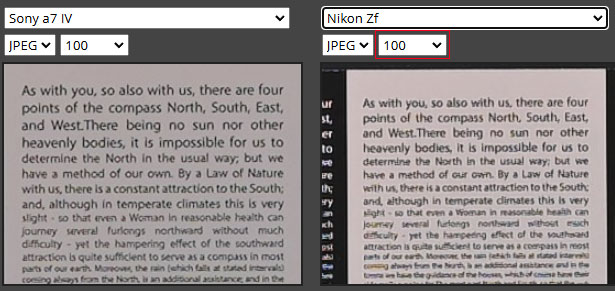
A comparison is very clear the Sony A7 IV camera is able to pick a bit more detail due to a slightly higher-resolution sensor, so if you are into commercial photography or need large prints,
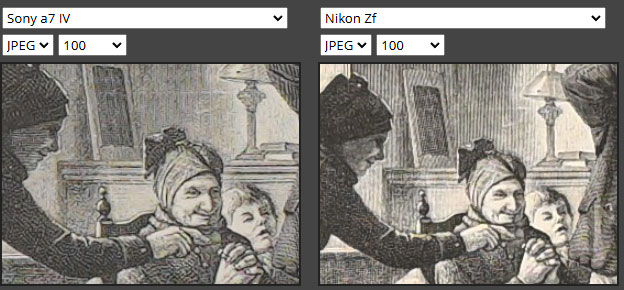
But this is not always the case. In some of the specific spots of the image, we have witnessed that the Nikon Zf / Z5 Mark II camera sensor is able to grab a bit more detail. As you can see, the pencil shading and the fine lines are more clearly visible in the samples below.

Best Camera for LOW LIGHT Photography?
The Nikon Z5 II is more suitable for low-light photography. We have to consider several factors before we judge the best camera for low-light photography. As in the comparison table, you can see that the Nikon Z5 Mark II autofocus sensitivity can go down up to -10EV, which is exceptional in this price range. At the very same time, the Nikon Z5 Mark II camera features 7.5 stops of sensor image stabilisation system, and that can be linked to the autofocus point of the camera, resulting in a highly stabilised video or still output. And at the very end, we have a 24MP BSI sensor that helps us reach the maximum potential of the camera. Combining all three factors makes the Nikon Z5 ideal in terms of low-light photography.
Best camera for wildlife photographers and sports shooters?
Nikon Z5 II is the best camera, again, and it depends on several factors. Starting from the continuous shooting speed, the Nikon Z5 Mark II camera excels. It has a maximum continuous shooting speed of up to 30 frames per second. The Sony A7 IV camera remains limited to 10fps. But that’s not the only limitation — we have again the autofocus sensitivity of the Sony A7 IV is limited, and the sensor image stabilisation of the Nikon Z5 II has become increasingly advanced. You can link the entire IBIS unit with your moving autofocus points. And at the end, if you are worried about the autofocus performance, then the Z5 II, paired up with the Expeed 7 image processor, features 9 different types of subject detection algorithms inside it. And even if you love to capture birds, the camera can do bird-eye autofocus with the latest updates.
Best camera for video?
Both of the cameras record 10-bit footage, RRS video, and 4K 60FPS video with a 1.5X crop. At the very same time, both of them can record Full HD videos at 120 frames per second. The big difference can be seen when the new Nikon Z5 Mark II camera can deliver complete RAW footage of 12-bit in your internal SD card, and the cherry-on-top thing is when you are shooting in N-Log, then you have a different set of RED LUTs available to you, which will make your entire footage more and more professional. And apart from all these, we also have vectorscope, waveforms, and timecode functionality. The Nikon Z5 Mark II camera is recommended for professional use. If you are a professional wedding cinematographer or someone who loves to capture short stories in a professional way, then the Nikon Z5 Mark II is best for you.
Sony A7 IV doesn’t support complete RAW video recording. At the very same time, the picture profiles are limited. But it does support high-quality 4K recording and S-Log, HLG support. At the very same time, the gyro-based image stabilization system helps to stabilize the footage to the maximum extent. So if you’re shooting handheld, like creating your own personal vlog, then instead of having the Nikon Z5 Mark II camera, the A7 IV will be a bit more suitable.
Best camera for longer recording
If you have to shoot podcasts, then the initial specification says the Sony A7 IV can record unlimited videos, whereas the Nikon Z5 Mark II has a 2-hour 5-minute limit, and after that, you have to start it again. Now, the concern with the Sony A7 Mark IV camera is that you have to use it in controlled weather environments and with fast V90 or CFexpress cards if you wish to record 10-bit videos for more than 1+ hour. But that’s not the case with the Nikon Z5 Mark II camera — the body is heat-resistant and supports uninterrupted recording for long periods. So you have to decide whether you want an overheating-free camera (but again, you have to restart at the 2 hour 5 minute mark), or you can deal with the Sony A7 IV if you are sitting in a controlled weather environment with air conditioners.
Specification Comparison Table Nikon Z5 II vs Sony A7 IV
| Feature | Nikon Z5 II | Sony A7 IV |
|---|---|---|
Design |
||
| Lens Mount | Nikon Z | Sony E |
| Dimensions (W x H x D) | 5.3 x 4 x 2.8″ / 134 x 100.5 x 72 mm | 5.2 x 3.8 x 3.1″ / 131.3 x 96.4 x 79.8 mm |
| Weight (With Battery, Media) | 1.5 lb / 700 g | 1.4 lb / 658 g |
| Material of Construction | Magnesium alloy/polycarbonate | Magnesium Alloy |
| Operating Conditions | 32 to 104°F / 0 to 40°C, up to 85% humidity | 32 to 104°F / 0 to 40°C |
| Display Size | 3.2″ | 3.0″ |
| Display Resolution | 2,100,000 Dot | 1,036,800 Dot |
| Display Type | 3-Way Tilting Touchscreen LCD | Free-Angle Tilting Touchscreen LCD |
| Viewfinder Type | Electronic (OLED) | Electronic (OLED) |
| Viewfinder Size | 0.5″ | 0.5″ |
| Viewfinder Resolution | 3,690,000 Dot | 3,680,000 Dot |
| Viewfinder Magnification | Approx. 0.8x | Approx. 0.78x |
| Viewfinder Eye Point | 21 mm | 23 mm |
| Viewfinder Diopter Adjustment | -4 to +2 | -4 to +3 |
| Media/Memory Card Slot | Dual Slot: SD/SDHC/SDXC (UHS-II) | Slot 1: CFexpress Type A / SD (UHS-II), Slot 2: SD/SDHC/SDXC (UHS-II) |
| Video I/O | 1x Micro-HDMI Output | 1x HDMI Output |
| Audio I/O | 1x 3.5 mm TRS Stereo Headphone Output, 1x 3.5 mm TRS Stereo Microphone Input | 1x 3.5 mm TRS Stereo Headphone Output, 1x 3.5 mm TRS Stereo Microphone Input |
| Other I/O | 1x 3.5 mm Remote Input, 1x USB-C (USB 3.2 / 3.1 Gen 1) Data Input/Output | 1x Sony Multi/Micro-USB Remote Input, 1x USB-C (USB 3.2 / 3.1 Gen 1) Data Input/Output |
| Wireless | Bluetooth 5.0, 2.4 / 5 GHz Wi-Fi 5 (802.11ac) | Wi-Fi 4 (802.11n), Bluetooth 4.1 |
| Mobile App Compatibility | Yes: SnapBridge (Android & iOS) for file access, firmware updates, and remote control | Yes: Creators’ App (Android & iOS) for file access, settings, remote control, and setup |
| GPS | Via a connected smartphone | Via a connected smartphone |
| Battery | 1x EN-EL15c Rechargeable Lithium-Ion (Approx. 380 shots) | 1x NP-FZ100 Rechargeable Lithium-Ion, 7.2 VDC, 2280 mAh (Approx. 520 shots) |
| Shoe Mount | 1x Hot Shoe | 1x Intelligent Hot Shoe |
| Tripod Mounting Thread | 1x 1/4″-20 Female (Bottom) | 1x 1/4″-20 Female (Bottom) |
| Package Weight | 2.555 lb | 2.48 lb |
| Box Dimensions (LxWxH) | 7.9 x 7.8 x 5.1″ | 10.2 x 7.2 x 6.4″ |
Photography Features Comparison |
||
| Sensor Resolution | Actual: 25.28 Megapixel, Effective: 24.5 Megapixel (6048 x 4032) | Actual: 34.1 Megapixel, Effective: 33 Megapixel (7008 x 4672) |
| Image Sensor | 35.9 x 23.9 mm (Full-Frame) CMOS | 35.9 x 23.9 mm (Full-Frame) CMOS |
| Sensor Crop (35mm Equivalent) | Crop Factor: 1x | Crop Factor: 1x, Additional Modes: 1.5x (Select video modes) |
| Image Stabilization | Sensor-Shift, 5-Axis, 7.5 Stops, you can link with AF points | Sensor-Shift, 5-Axis, Traditional |
| Built-In ND Filter | No | No |
| Capture Type | Stills & Video | Stills & Video |
| Shutter Type | Mechanical Focal Plane Shutter and Electronic Rolling Shutter | Mechanical Focal Plane Shutter and Electronic Rolling Shutter |
| Shutter Speed | 1/8000 to 30 seconds, Bulb & Time Mode | 1/8000 to 30 Seconds, Bulb Mode (1/8000 to 1/4 Second in Movie Mode) |
| ISO Sensitivity (Photo) | Native in Auto Mode: 100 to 64,000 (50 to 204,800 Extended) | Native in Manual Mode: 100 to 51,200 (50 to 204,800 Extended), Native in Auto Mode: 100 to 12,800 |
| Metering Method | Center-Weighted Average, Highlight Weighted, Matrix, Spot | Center-Weighted Average, Highlight Weighted, Multi-Zone, Spot |
| Exposure Modes | Aperture Priority, Auto, Manual, Program, Shutter Priority | Aperture Priority, Auto, Manual, Program, Shutter Priority |
| Exposure Compensation | -5 to +5 EV (1/3, 1/2 EV Steps) | -5 to +5 EV (1/3, 1/2 EV Steps) |
| Metering Range | -4 to 17 EV | -3 to 20 EV |
| White Balance |
Presets: Auto, Cloudy, Color Temperature, Direct Sunlight, Flash, Fluorescent, Incandescent, Preset Manual, Shade Portrait Persona: Custom Skin WB Tone Selector (Video still both) |
2500 to 9900K, Presets: ATW, AWB, Auto, Cloudy, Color Temperature, Color Temperature Filter, Custom, Daylight, Flash, Fluorescent (Cool White, Day White, Daylight, Warm White), Incandescent, Shade, Underwater |
| Continuous Shooting | Up to 30 fps at Maximum Resolution | Up to 10 fps at Maximum Resolution for up to 1000 Frames (Raw, JPEG) |
| Interval Recording | Yes | Yes |
| Self-Timer | 2/5/10/20-Second Delay | 2/5/10-Second Delay |
| Aspect Ratio | 1:1, 3:2, 16:9 | 1:1, 3:2, 4:3, 16:9 |
| Image File Format | HEIF, JPEG, Raw | HEIF, JPEG, Raw |
| Bit Depth | 14-Bit | 14-Bit |
| Focus Type | Auto and Manual Focus | Auto and Manual Focus |
| Focus Mode | Continuous-Servo AF, Full-Time Servo, Manual Focus, Single-Servo AF | Continuous-Servo AF, Direct Manual Focus, Manual Focus, Single-Servo AF |
| Autofocus Points | Phase Detection: 273 | Phase Detection: 759, Contrast Detection: 425 |
| Autofocus Sensitivity | -10 to +19 EV | -4 to +20 EV |
| Built-In Flash/Light | No | No |
| Flash Modes | First-Curtain Sync, Off, Rear Curtain Sync/Red-Eye Reduction, Rear Sync, Red-Eye Reduction, Slow Sync, Slow Sync/Red-Eye Reduction | Auto, Fill Flash, Hi-Speed Sync, Off, Rear Sync, Red-Eye Reduction, Slow Sync |
| Maximum Sync Speed | 1/200 Second | 1/250 Second |
| Flash Compensation | -3 to +1 EV (1/3, 1/2 EV Steps) | -3 to +3 EV (1/3, 1/2 EV Steps) |
| Dedicated Flash System | iTTL | TTL |
| External Flash Connection | Shoe Mount | Shoe Mount |
Video |
||
| Raw Video Recording |
Yes, NRAW | NA |
| Internal Recording Modes | H.264/MOV/MP4: UHD 4K (3840 x 2160) at 23.98/25/29.97/50/59.94 fps 1920 x 1080p at 23.98/25/29.97/50/59.94/100/120 fps |
H.264/XAVC S-I 4:2:2 10-Bit: UHD 4K (3840 x 2160) at 23.98/25/29.97/50/59.94 fps [240 to 600 Mb/s] 1920 x 1080p at 23.98/25/29.97/50/59.94 fps [89 to 222 Mb/s] H.265/XAVC HS 4:2:2 10-Bit: |
| Video IS | IBIS + EVR | Yes, Gyro |
| External Recording Modes | 8-Bit via HDMI: UHD 4K (3840 x 2160) up to 29.97 fps |
4:2:0 8-Bit via HDMI: UHD 4K (3840 x 2160) at 23.98/25/29.97/50/59.94 fps |
| Fast-/Slow-Motion Support | No | Yes |
| Overheating issues, if any | No | Requires V60 above the card, Fixed with the recent firmware updates |
| Log and Gamma Curve | Not specified | HDR-HLG, Sony S-Log 2, Sony S-Log 3 |
| Recording Limit | 2-Hour 5-Minute Maximum | No |
| IP Streaming | No | No |
| Built-In Microphone | Stereo | Stereo |
| Audio Recording | MOV, Raw: 24-Bit 48 kHz AAC Audio MP4: 16-Bit 48 kHz LPCM Audio |
XAVC S: 2-Channel 16-Bit 48 kHz LPCM Audio MPEG4: 2-Channel AAC LC Audio |
Follow us on our social pages FACEBOOK | TWITTER | INSTAGRAM to get live Camera News + Nikon Rumors 24X7


![[2025 Upgraded] Retractable Car Charger, SUPERONE 69W Car Phone Charger with Cables Fast Charging, Gifts for Men Women Car Accessories for iPhone 16 15 14 13 12, Samsung, Black](https://i1.wp.com/m.media-amazon.com/images/I/61SaegZpsSL._AC_SL1500_.jpg?w=300&resize=300,300&ssl=1)





![[True Military-Grade] Car Phone Holder【2024 Stronger Suction & Clip】 Universal Cell Phone Holder for Car Mount for Dashboard Windshield Air Vent Long Arm Cell Phone Car Mount Thick Case,Black](https://i2.wp.com/m.media-amazon.com/images/I/715PBCuJezL._AC_SL1500_.jpg?w=300&resize=300,300&ssl=1)
![[エレコム] スマホショルダー ショルダーストラップ 肩掛け ストラップホールシート付属 丸紐 8mm P-STSDH2R08](https://i3.wp.com/m.media-amazon.com/images/I/51BMFf06pxL._AC_SL1500_.jpg?w=300&resize=300,300&ssl=1)




